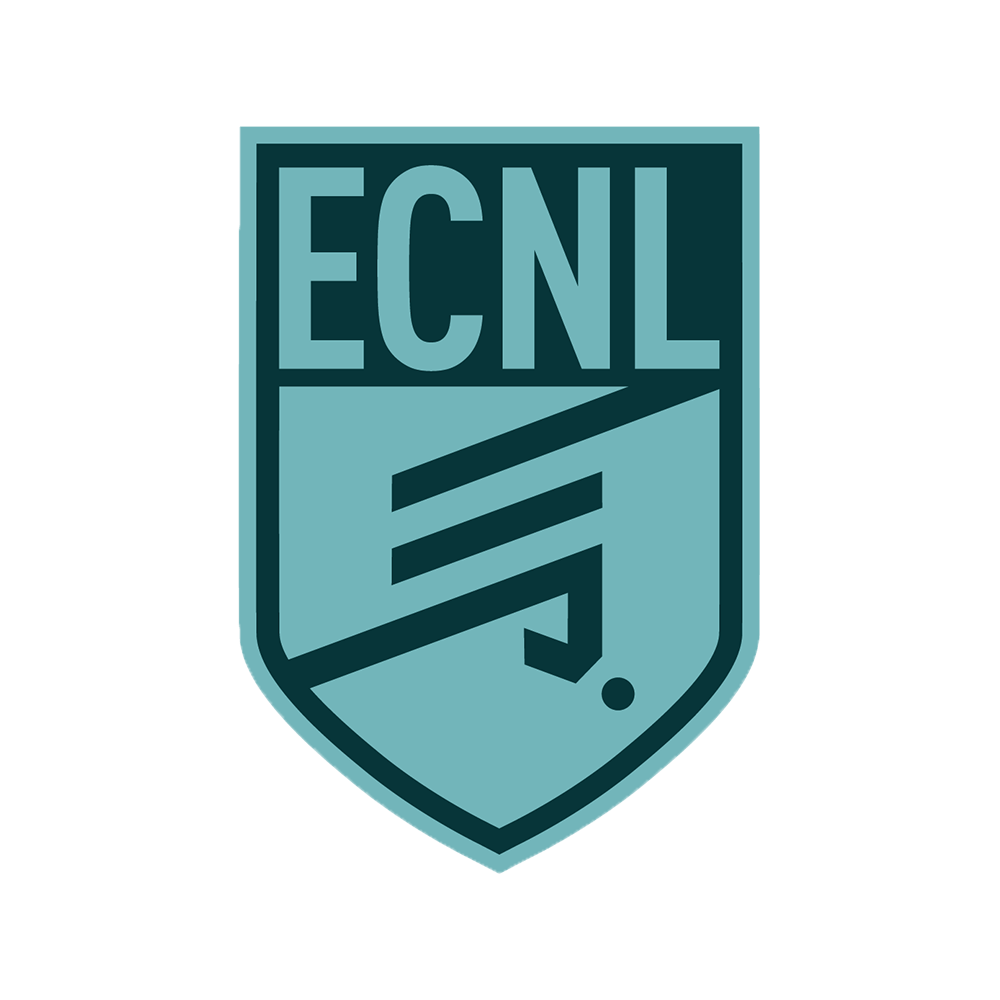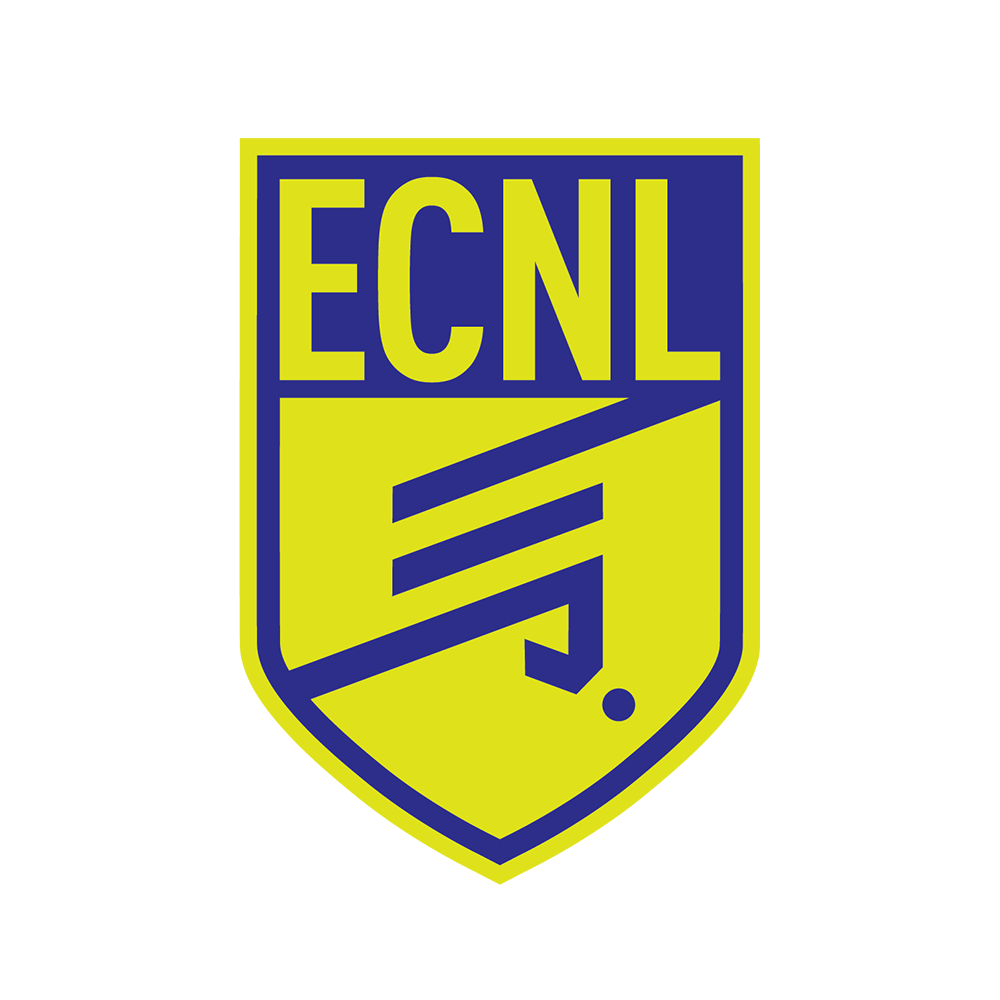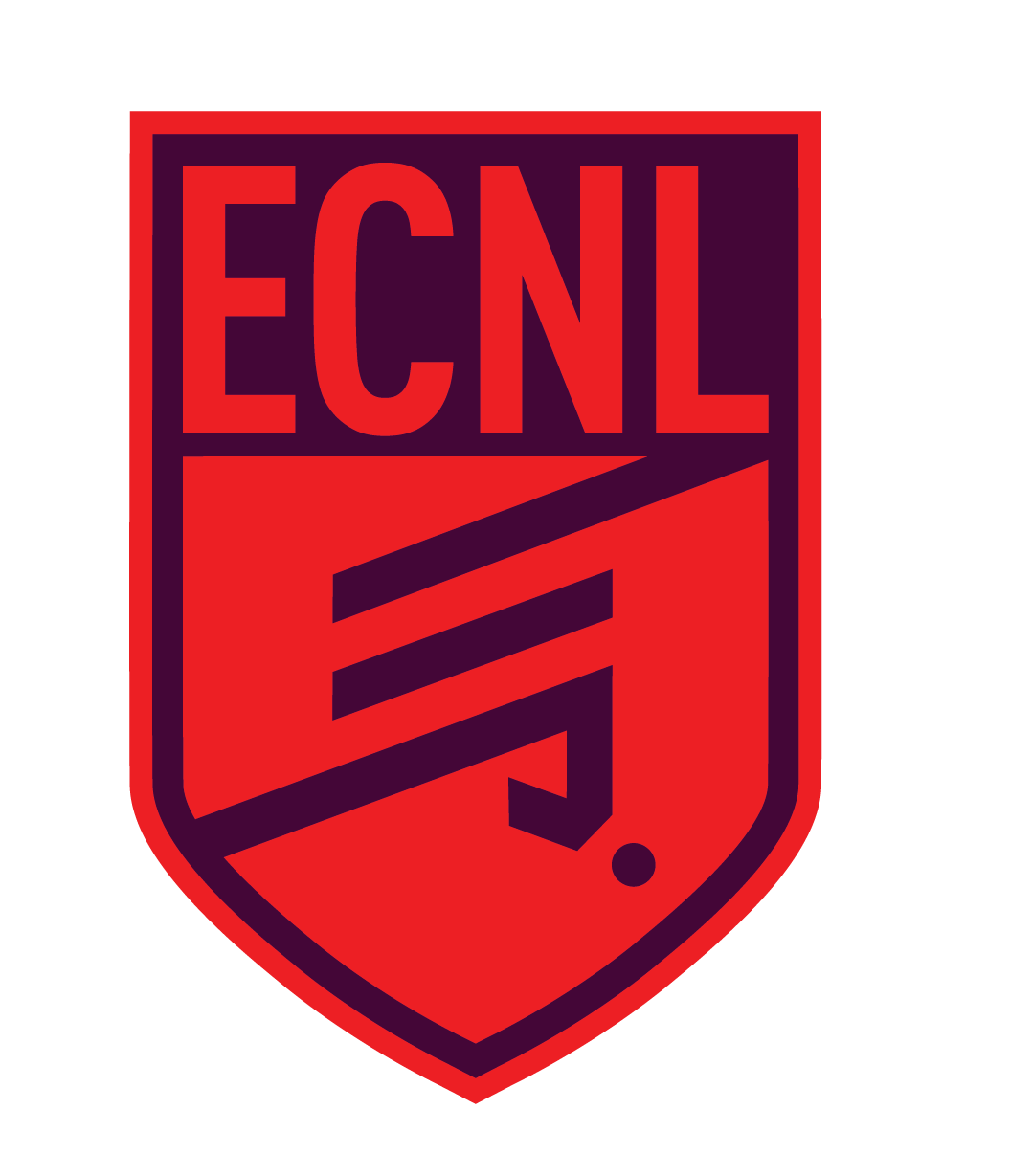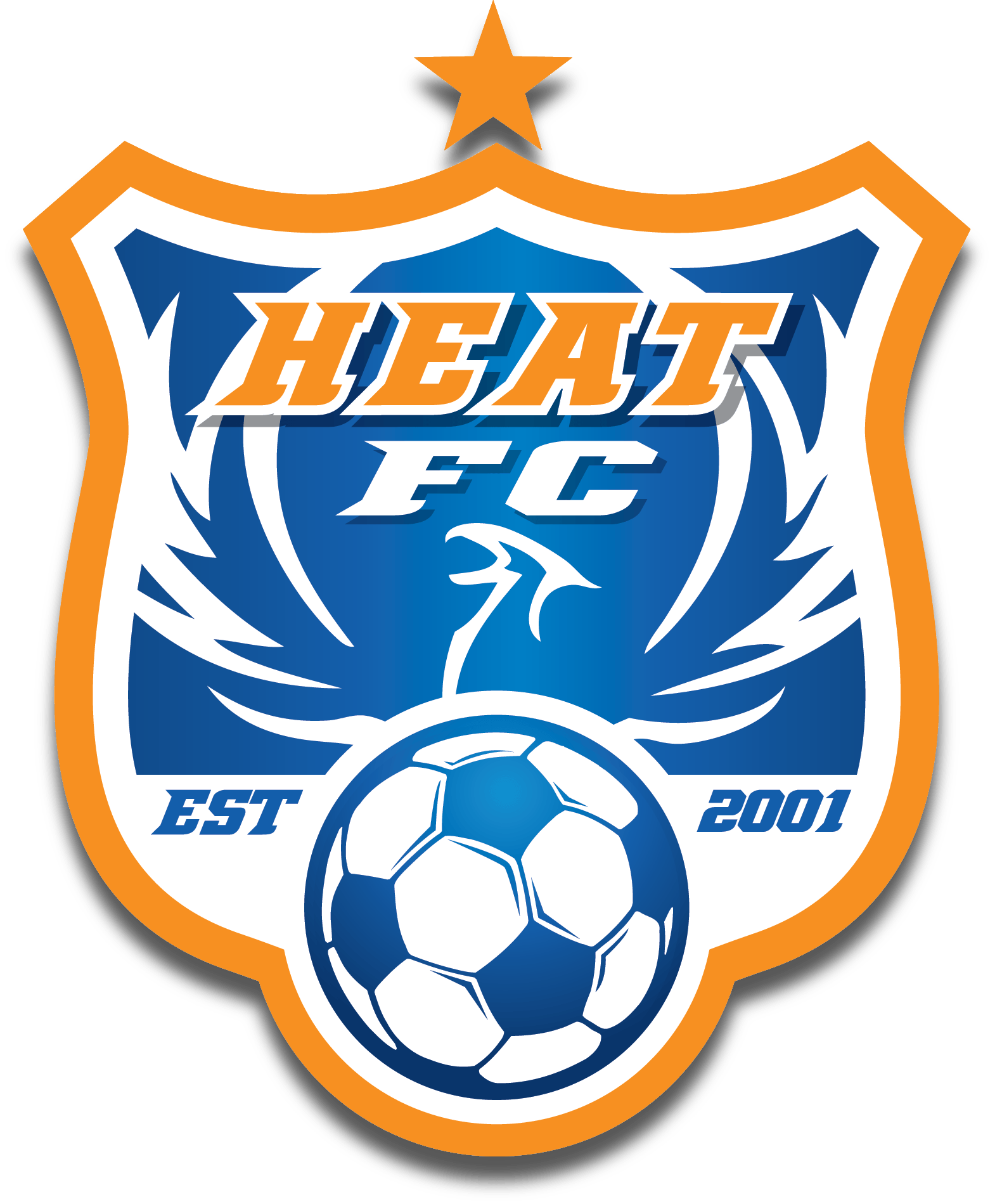ECNL
U13 - U19
THE ECNL

The ECNL was founded in 2009 as a challenge to the status quo of youth soccer, with a vision to be better. In its first years, the league supported only girls programming, but that was to change.
As a result of grassroots collaboration and innovation driven by youth soccer leaders all around the country, the ECNL quickly rose to national prominence – and ultimately to be the top level of competition and player development in the country. Each step was fueled by a shared commitment to elevating the youth soccer experience.
From inception, the ECNL consistently developed in alignment with the needs of its member clubs, always seeking opportunities to lead and provide more, no matter the challenge or adversity. The four letters “ECNL” have become the embodiment of collaborative innovation, opportunity, respect, development, and excellence in youth soccer, as the once-radical idea of clubs having a voice to determine their future proved to produce results never before seen in youth soccer. Unrivaled numbers of female players, of constantly improving quality, began moving on to the collegiate, professional, and national team levels as the ECNL impact changed youth soccer.
In 2017, the landscape again demanded more and the ECNL Boys was founded, setting the stage for an amazing period of rapid growth, increasing quality and further change in youth soccer. Starting with 57 of the top boys clubs in the country, the creation of the Boys ECNL once again demonstrated how a total commitment to improving the experience of players, coaches, clubs, and the environment in which they develop, can change everything.
Today, the ECNL represents the epitome of excellence in youth soccer, for boys and girls, as the league and its clubs, players, coaches, and everyone involved seeks to constantly “Raise the Game” for the futureNew Paragraph
We are The ECNL and we are More Than A League
The ECNL consists of two youth soccer leagues (male and female), each a non-profit, member-based 501(c)(3) organization, with independent governance and leadership structures. The ECNL Board of Directors and staff govern all programs and platforms. The ECNL is sanctioned by US Club Soccer.

To “Raise the Game” by elevating standards and experience in all aspects of youth soccer.

Description Title
The ECNL four primary platforms to accomplish its mission:
The Competition Platform
The Player Identification Platform
The Club and Coach Development Platform
The Health & Education Resources Platform

MORE THAN A LEAGUE
Our mission to Raise the Game changes the youth soccer landscape through innovative, player-centered programs that raise standards of quality and experience in all aspects of the game.
INNOVATION Through Player-Centered Programming.
RESPECT For Diversity, Style, System and Structure.
OPPORTUNITY Created Through Exposure, Showcasing and Role Modeling.
DEVELOPMENT Of the Environment and Person.
EXCELLENCE Across the Youth Soccer Experience.

INTRODUCTION
The history of the ECNL is a series of milestones achieved through collaboration between youth soccer leaders across the country seeking to create a better environment. Each step forward helped to create a league that serves clubs more completely, and that helps players more fully. The list of milestones will continue as this generation of player, coach, and leader works to make their mark in Raising the Game.

2017-2018: Inaugural ECNL Boys Season
The inaugural ECNL Boys season, August 2017 to July 2018, included 57 of the top boys soccer clubs throughout the country, with more than 9,000 players participating in ECNL Boys competition in the U14, U15, U16, U17 and U18/U19 age groups. The first season featured three National Events held in Florida, California and Pennsylvania. The ECNL Boys participated in the Elite National Premier League (ENPL) Post Season, which is run by US Club Soccer, with the ENPL Playoffs held in San Diego, CA (West) and Boston, MA (East) and the Finals held in Colorado. Four out of the five ENPL National Champions were ECNL Boys teams.
2018-2019: ECNL Boys Season
In it’s second season, 2018-19, the ECNL Boys saw several changes. The league added fourteen of the top boys clubs from around the country, bringing the total number of ECNL member clubs to 71. Each of the 71 member clubs had an ECNL Boys team in the U14 through U18/U19 age groups. The ECNL Boys offered four National Events: Oklahoma, Florida, California and Pennsylvania. The Elite National Premier League (ENPL) Playoffs were held in Rockford, IL run by US Club Soccer, with the ENPL Finals being held in Colorado. Seven of the ten teams participating in the ENPL Finals were ECNL Boys teams, further accounting for four of the five ENPL National Champions crowned during the event.
2019-2020: ECNL Boys Season
The 2019-20 ECNL Boys season saw yet another growth spurt for the league, increasing to 90 total member clubs across eight conferences, including the formation of a brand new Northwest Conference. Competition within the ECNL Boys also grew, including the Under-13 age group in official ECNL Boys league structure and launching the Conference Selection Program (CSP) and SuperCup player identification platforms. The ECNL Boys was set to offer four National Events during the 2019-20 season: Las Vegas, Florida, Greer, and Pennsylvania. Additionally, the league facilitated two National Events for the U13 & U14 ages, with the first built into its Last Vegas National Event and the second scheduled in Richmond, VA in early May 2020. The ENPL Playoffs and Finals, both managed by US Club Soccer, were to be held at DICK’S Sporting Goods Park in Commerce City, Colorado. The season was suspended and eventually cancelled due to COVID-19.

The ECNL was founded in 2009 by forward-thinking Directors of Coaching across the country who saw a need for change in and special commitment to improving the daily environment for American elite female youth soccer players. These Directors came together and collaborated to build what would become the top female youth development platform in the world. The grass roots leadership and cooperation was unprecedented in American youth soccer, and the ECNL continues to be the most progressive and innovative development platform in the country.
2009-2010: Inaugural ECNL Season
The inaugural ECNL season, August 2009 to July 2010, included 40 of the top girls soccer clubs throughout the country, with more than 2,000 players participating in ECNL competition in the U15, U16, and U17 age groups. Teams competed in one of two competitive flights (the “A Flight” or the “B Flight”) for the ECNL National Championship, the ECNL Club National Championship, and promotion and relegation between the flights. Each team played nine regular season games within their division for placement going into the ECNL National Championship. Games were played at five different ECNL National Showcase Events held throughout the country, and all participating teams came together for the first annual ECNL National Championship in Seattle, WA in July 2010.
2010-2011
In its second season, 2010-11, the ECNL saw several changes. The ECNL added twelve of the top girls clubs from around the country, bringing the total number of ECNL member clubs to 52, and expanded to include the U18 age group. Each of the 52 member clubs had an ECNL team in the U15 through U18 age groups. In total, each team played roughly 16 games. The ECNL schedule expanded to include regional competition to supplement the existing ECNL National Showcase Events, and the ECNL National Championships were held in Aurora, CO in July. By adding more age groups and more high-quality ECNL games, the ECNL took steps that allowed the member clubs to increase the quality of games played while reducing the overall number of games on their calendar, increase the training time for their players, and expand the developmental opportunities provided by this platform into more age groups.
2011-2012
In the third season, 2011-12, the ECNL again expanded to include the nation’s elite 66 female soccer clubs, an enhanced scouting and player identification structure, accessible club administrative, coaching, and scouting education opportunities, and an improved season structure that includes the U14 age group. Most importantly, the ECNL expanded the competition platform to approximately 30 games per team. By focusing solely on the elite competition within the ECNL, these clubs will be able to provide an improved environment with a better training-to-game ratio and more demanding and consistent competition. The 2011-12 ECNL season has three parts which provide the competitive platform for over 5,000 games to be played:
1- ECNL Conference and Cross-Conference Competitions;
2- ECNL National Event Competitions; and
3- ECNL National Championships.
2012-2013
In the fourth season of the ECNL, 2012-13, signs began to show that the league was maturing and getting close to its full size. Expansion was limited, as only 7 clubs were added to reach a total of 73 clubs. Conference play became the dominant portion of the ECNL schedule, with conference results determining qualification for the ECNL post-season. This was a change from previous seasons. The top 32 teams in the ECNL, based on conference games and limited wildcards, qualified for the ECNL Champions League post-season playoffs. The next best 32 teams in the ECNL qualified for the ECNL North American Cup play-offs. Both play-offs were contested in Aurora, CO, with the top 8 teams in each competition qualifying for the ECNL Finals. The inaugural ECNL Finals were played in Richmond, VA where the winners of the ECNL Champions League were crowned the ECNL National Champions. The winners of the ECNL North American Cup were crowned Cup Champions.
2013-2014
In the fifth season, 2013-14, the ECNL experienced a small expansion, with only 3 clubs added to bring the total number of ECNL member clubs to 76. While there was limited conference re-alignment, the competition structure generally remained the same as the 2012-2013 season. The 2014 ECNL Playoffs (where the Champions League and North American Cup qualifiers will compete) were played in Seattle, WA in late June – bringing the league full circle to its humble beginnings in 2009. The winners of each playoff group advanced to the ECNL Finals, again held in Richmond, VA.
2014-2015
In the sixth season, 2014-15, the competition structure changed with the additions of the Showcase Cup, rounding out the ECNL Playoffs with three tiers: Champions League, North American Cup and Showcase Cup. The Champions League structure remained the same as years past, while both the North American Cup and Showcase Cup were set up as knockout style brackets, with 16 teams competing in each for a chance to be crowned champion in Seattle, WA. The winners of each playoff group in the Champions League advanced to the ECNL Finals, held in Richmond, VA for the third year.
2015-2016
In the seventh season, 2015-16, the ECNL expanded to 79 member clubs, with limited conference re-alignment. The competition structure remained the same for the ECNL Playoffs with three tiers: Champions League, North American Cup and Showcase Cup. The Champions League structure changed slightly with the addition of the quarterfinal game at the ECNL Playoffs, while both the North American Cup and Showcase Cup stayed the same with knockout style brackets, with 16 teams competing in each for a chance to be crowned champion in Oceanside, CA. The winners of each quarterfinal game in the Champions League advanced to the ECNL Final Four, held in Germantown, MD.
2016-2017
In the eighth season, 2016-17, the ECNL expanded to 84 member clubs, with limited conference re-alignment. The competition structure remained the same for the ECNL Playoffs with three tiers: Champions League, North American Cup and Showcase Cup. Both the North American Cup and Showcase Cup stayed the same with knockout style brackets, with 16 teams competing in each for a chance to be crowned champion in Rockford, IL. The winners of each Champions League quarterfinal game advanced to the ECNL Final Four, held in San Diego, CA.
2017-2018
In the ninth season, 2017-18, the ECNL consisted of 80 member clubs, with limited conference re-alignment. The competition structure remained the same for the ECNL Playoffs with three tiers: Champions League, North American Cup and Showcase Cup, with the U14 division expanding in the Champions League format to 32 teams in the post season. Both the North American Cup and Showcase Cup stayed the same with knockout style brackets, with 16 teams competing in each for a chance to be crowned champion in Seattle, WA. The winners of each Champions League quarterfinal game advanced to the ECNL Final Four, held in Richmond, VA.
2018-2019
In the tenth season, 2018-19, the ECNL consisted of 89 member clubs, with limited conference re-alignment. The competition structure remained the same for the ECNL Playoffs with three tiers: Champions League, North American Cup and Showcase Cup, with the U14 division expanding in the Champions League format to 32 teams in the post season. Both the North American Cup and Showcase Cup stayed the same with knockout style brackets, with 16 teams competing in each for a chance to be crowned champion in San Diego, CA. The winners of each Champions League quarterfinal game advanced to the ECNL Final Four, held in Richmond, VA. In addition, the ECNL expanded the post season to include both the U13 division and the U18/U19 Composite division. The U13 division included 16 teams, following the same format as the U18/U19 division. The ECNL U18/U19 Composite division is an optional division that saw six teams advance from five eligible conferences. The first ECNL U13 National Champion and first ECNL U18/U19 Composite Champion were crowned in San Diego, CA.
2019-2020
In the eleventh season, 2019-20, the ECNL consisted of 94 member clubs, with limited conference re-alignment. The competition structure was slated to expand for the ECNL Playoffs with the addition of a fourth tier; Champions League, North American Cup, Showcase Cup and Open Cup. The ECNL Open Cup was added to combine both ECNL and ECNL Regional League qualifiers in a 16 team knockout style bracket. Both the North American Cup and Showcase Cup stayed the same with knockout style brackets, with 16 teams competing in each for a chance to be crowned champion. The winners of each Champions League quarterfinal game were scheduled to advance to the ECNL Final Four. In addition, the ECNL U18/U19 Composite division is an optional division that expanded to see eight teams advance to compete for the championship. The season was suspended and eventually cancelled due to COVID-19.
2020-2021
In the twelfth season, 2020-21, the ECNL consisted of 113 member clubs, with limited conference re-alignment. The competition structure slated to expand in the previous season for the ECNL Playoffs was fulfilled. The ECNL Post-Season saw a few amendments due to impending weather, resulting in qualifying the top (8) teams in the U15 age group to the ECNL Finals in Richmond, VA and cancelling the U15 North American Cup, Showcase Cup A, Showcase Cup B and Open Cup after two days of play. All other competitions were fulfilled, seeing (1) ECNL National Champion crowned in Lakewood Ranch, FL with the U18/U19 division, and (5) additional ECNL National Champions being crowned in Richmond, VA with the U13, U14, U15, U16 and U17 divisions. In addition, the ECNL North American Cup, ECNL Showcase A Cup, ECNL Showcase B Cup and ECNL Open Cup crowned champions in both the U16 and U17 age divisions. The final season of the ECNL U18/U19 Composite division finished at the ECNL Playoffs as well, crowning a champion.
